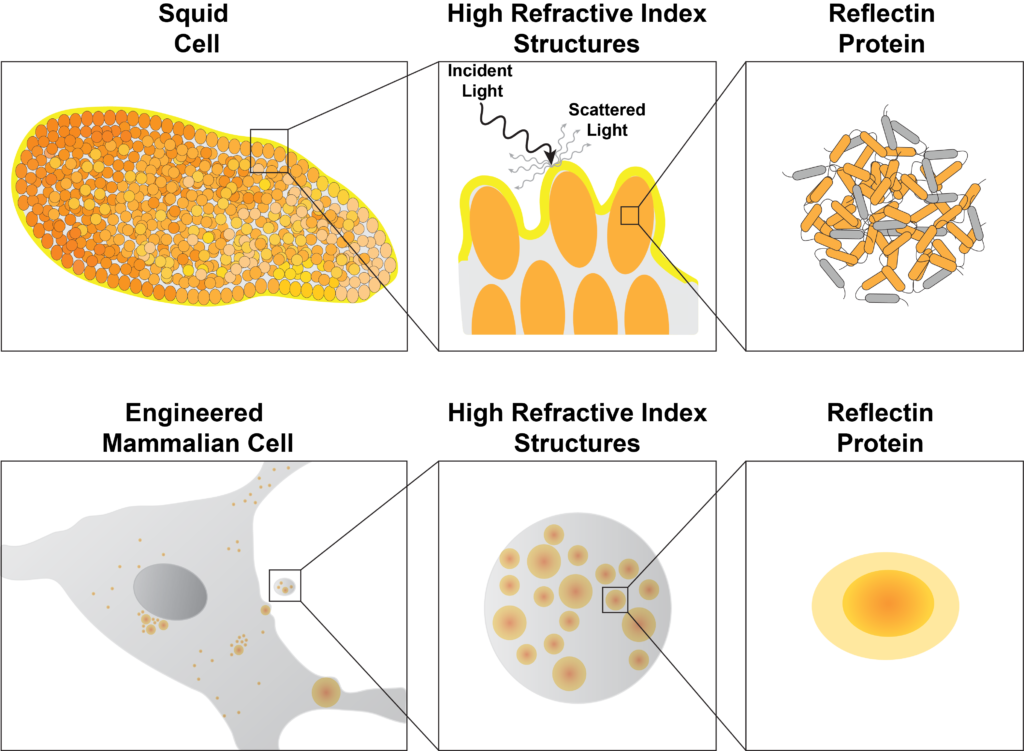Mapping light-reflecting protein structures in squid skin cells
|Squids and other cephalopods have evolved skin cells, called iridophores and leucophores. These cells contain a high refractive index material, the reflectin protein, which allows them to reflect and scatter light. Despite their potential for the development of novel optical materials, the study and characterisation of these biomaterial-based structures across multiple different environments is challenging.

Dr Atrouli Chatterjee, Dr Preeta Pratakshya, Prof. Alon A. Gorodetsky (University of California), Dr. Sigrid Bernstorff (Elettra Sincrotrone Trieste) and colleagues used a combination of experimental and computational methodologies to map, both in vivo and in vitro, the three-dimensional refractive index distributions and self-assembly of reflectin-based structures. To do so, they have exploited, among several investigation techniques, Small Angle X-Ray Scattering (SAXS) at the Austrian partner facility, located at the Elettra Sincrotrone Trieste. The authors are also continuing to explore these structures with NMR at Slovenian partner facilities, at the National Institute of Chemistry (Ljubljana).
In addition to improving our knowledge on the functionality of these very special squid skin cells, these results emphasize the importance of a multi-faceted approach for characterizing protein-based optical materials.
ORIGINAL ARTICLE:



